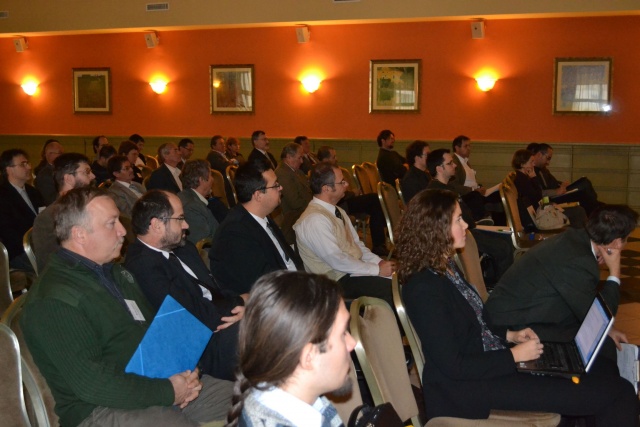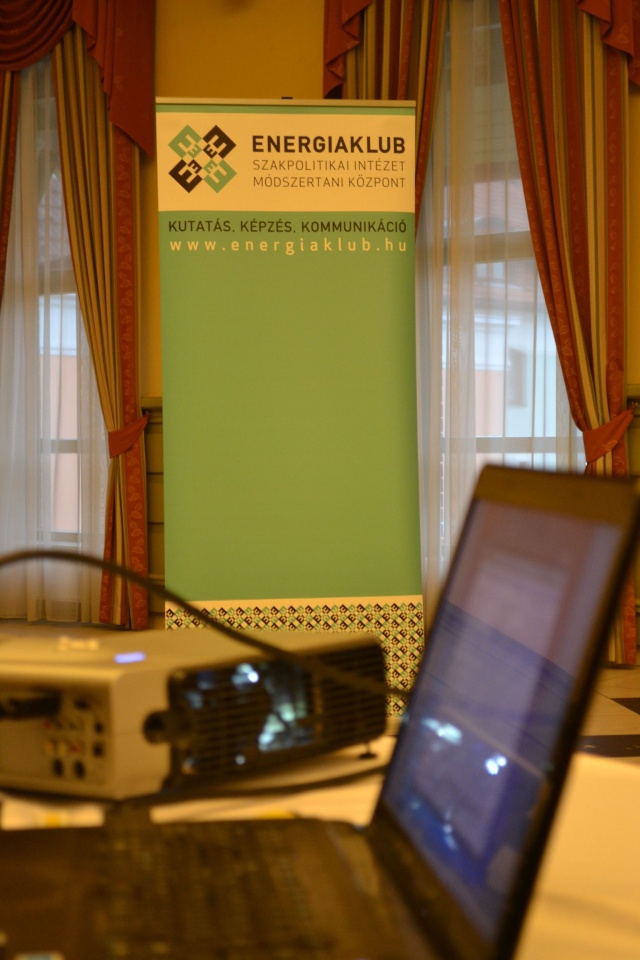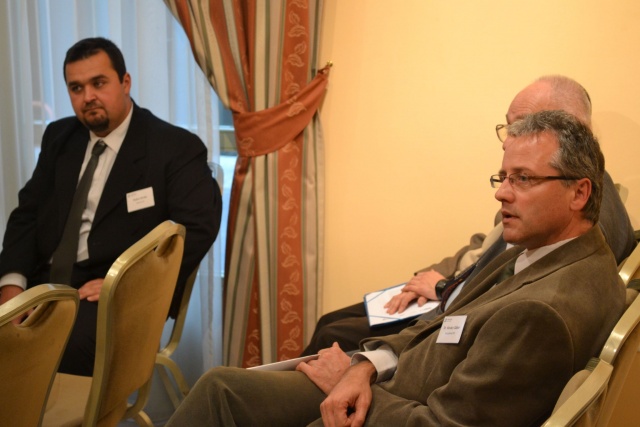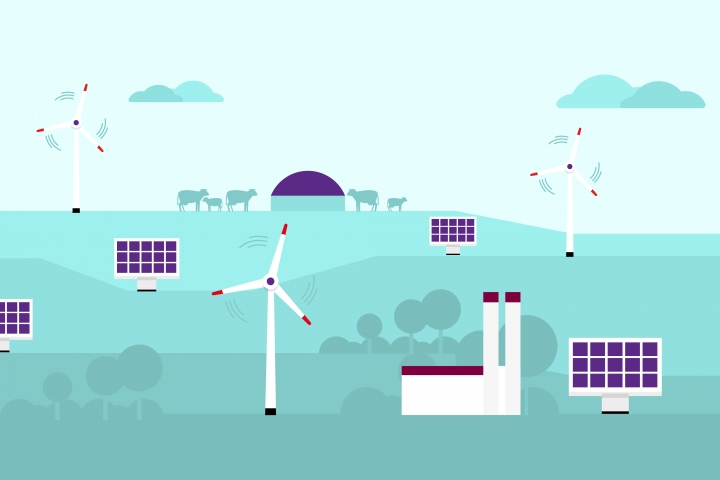Bioenergy for communities (conference report)
The conference and workshop titled “Bioenergy for Communities – Planning and Usage” was organized for the second time by Energiaklub and Szent István University. The event was held in Kecskemét this time, with participants from and outside of local governments. During the morning session the audience could see presentations, and after lunch there were three sections (financing, planning and technology) providing new information and answers to practical questions.
The event was opened by dr. András Iványosi Szabó (formerly deputy mayor of the local government of Kecskemét, currently a member of the Urban Planning, City Operation and Environmental Management Committee). He spoke about the importance of natural energy sources and presented the city’s successful renewable energy projects.
The presentation by Gábor Barts (analyst of the Hungarian Energy Office) on the government’s plans in relation to subsidies for renewable energy and waste management projects drew significant attention. He introduced the concept of METÁR (compulsory feed-in system for heat and electricity produced from renewable and alternative energy sources), which includes important novelties such as bonus tariffs and the brown tariff beside the base tariff. The legislation to replace the KÁT (the current compulsory feed-in system) encourages the use of heat beside electricity generation. This new feature is listed in the framework system as green heat bonus. The implementation of the brown tariff ensures the long-term (over 15 years) feasibility of projects. Along with the planned introduction of METÁR on January 1st, 2013, the creation of regional sustainability quotas is also expected.

Zsolt Kazai (Central Hungarian Innovation Centre) and József Hegyesi (Szent István University) presented the COACH BioEnergy international project and its achievements. Best practices, lifecycle analyses, 42 technology descriptions and several useful tools for efficiency calculation will be available also in Hungarian from January on the project website.
The most fundamental prerequisite of successful investments is comprehensive planning. Norbert Kohlheb (Szent István University) emphasised the importance of this. Municipalities can become self-sustaining in terms of energy by assessing local resources and using them. Satisfying the energy needs of local governments with renewable energy sources serves as an example, assisting in shaping public approach. Great results can only be achieved if both the local government and the residents participate.
Balázs Bozzay (vice-president, of the Pannon Renewable Energy Cluster) called attention to the catalyst role of local governments as well. Local governments must provide legitimacy and opportunities, and they must take responsibility. Other key factors of success are long-term commitment from decision-makers and communities, the involvement of experts to find the most fitting solutions, and participation of local entrepreneurs in realizing the projects.
This was followed by Lilla Csanaky’s (Energiaklub) presentation about the Policy Institute’s study on the opportunities of heat production from renewable energy sources in Hungary. She introduced the available potential and current utilization of each technology as well as the advantages of different implementation methods and the legal and policy background related to heat generation.

Dániel Dezsény (project manager at the First Hungarian Biogas Ltd.) spoke about the major characteristics of biogas utilization to participants. His presentation included the technology and various ingredients of biogas use and necessary factors for efficiently operating a biogas plant.
The last presentation before lunch break was that of Emese Kovács (Energiaklub). She emphasized the importance of municipalities communicating their renewable energy projects better both towards local residents and on a national level, which would improve the municipality’s image in a wider circle. She introduced the experiences of the RES Champions League up to today, and the municipalities, small and large, that realized the most successful projects.
In the afternoon the event continued in three interactive sections.

Presentations of the financing section discussed a wide variety of possibilities. Győző Polgár (Cothec Energetic Operator Ltd.) introduced a third-party financing form that may save 8 to 10% of expenses for the clients. Sándor Buda (MFB Invest) talked about the use of venture capital, which is not widely used in Hungary. Although financing through venture capital can be an alternative even in the renewable sector, this type of capital can be implemented mostly for greenfield investments or technology developments. Iván Gyurácz Németh (M27 Absolvo Consulting) approached the question from the subsidy side. He pointed out that because of the obligation to maintain the instalment, applicants should thoroughly think through what subsidy form they apply for, and horizontal undertakings should also be taken into account. He argued that it is not worth taking on too much responsibility to reach higher points in the course of the tender process. He emphasized that applicants should start compiling their applications so that the project is already at an advanced stage when the next KEOP tender (Environmental and Energy Operational Program) is announced.
The technology section started with a presentation by Adrienn Somosné Nagy (Pilze-Nagy Kft.) about the biogas plant operating at the company’s oyster mushroom farm. The plant facilitates the enterprise’s operation in several aspects: not only does it provide a part of the energy needed for heating the greenhouses, but it also solves problems related to the management of agricultural waste generated in the course of growing the mushrooms. Ernő Bíró introduced the Carborobot biomass furnace and gave an overview of raw materials available in Hungary and listed problems related to these. Attila Horváth (CEO at Termostar Kft.) spoke about the challenges of the district heating market and the development opportunities of Kecskemét’s district heating systems. The expansion and connection of individual systems is already scheduled, Mr. Horváth gave an overview of the advantages and disadvantages of the two available alternatives. János Csővári (system operator at Bácsvíz Zrt.) gave a report on the biogas producing system operating at the Kecskemét wastewater plant. This is not a new initiative; the plant has been in operation since the 1980s. The plant has potential to receive more waste and produce enough energy to sustain itself and sell the surplus.
In the planning and raw material section Norbert Kohlheb gave a presentation, going more into details than in the morning, on the process of strategic planning. Among other things, he introduced the charts prepared in the course of the COACH project for data collection, with the help of which local governments can start creating the basis for their energy strategies individually. Gábor Kovács (Hunfa Energy Kft.) talked about the direct benefits of energy plantations beyond energy generation, such as the possibility to integrate them into the public labour program (primarily for barrelled plantations). Another accessory benefit of energy plantations is the possibility to place sewage sludge and wood-ash there. Árpád Raisz (KEFAG Zrt.) was representing his company that manages 60 thousand hectares of state-owned forests from stocking to reaping, and also owns a processing plant. He emphasized that the excessive cutting area waste of forestries is a popular energy source among the population. In his opinion the use of these should be solved before the creation of energy plantations. István Padra (Bácsvíz Zrt.) reported that his company complemented its activities of using biogas from sewage sludge with energy plantations in order to satisfy its energy needs.
Presentations from the conference can be downloaded here.




